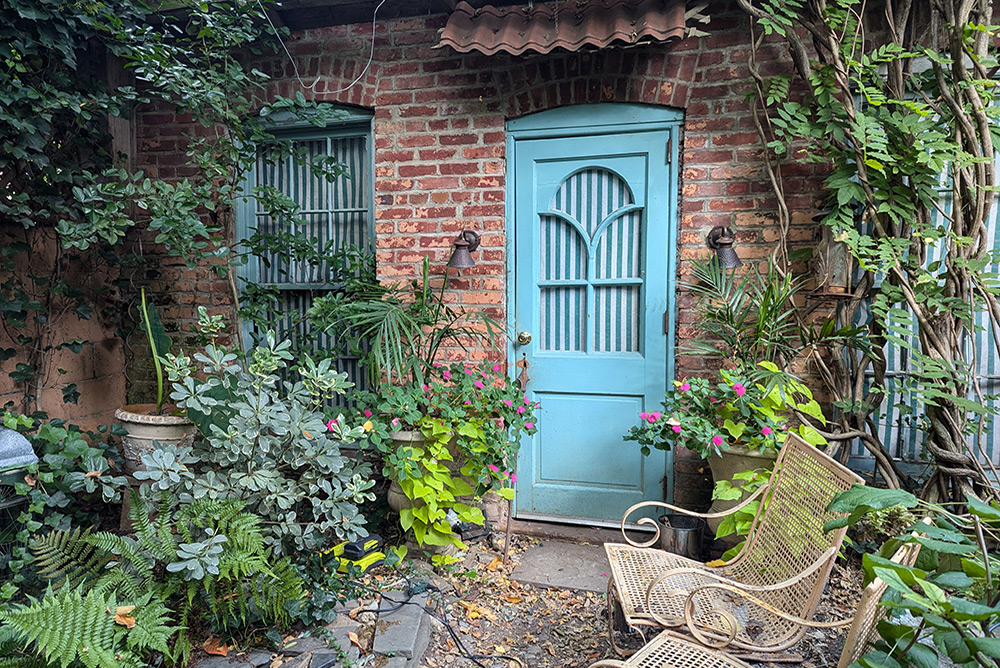
By now we’re familiar with the charming garage at the end of the Cavanaugh garden. Stephanie points out the two parlor palms that flank the door, planted with trailing sweet-potato vine. The palms will spend a few weeks on the back porch before being moved to the parlor for the winter. / Photo by Stephanie Cavanaugh.
By Stephanie Cavanaugh
I HATE THIS time of year, this moment in time when frosty days are near (for you, perhaps, they’re already here) but much of the garden is still at its peak. What a sad, sad thing it is to dismantle. But needs must!
The impatiens are particularly upsetting. Why do they wait until cooler weather to really flourish, spilling over their pots, and finally filling the empty spots they were supposed to fill in July.
And now they are about to die—by mine own hand, I might add.
With frosty nights approaching and bulbs to plant, the impatiens must be lifted and tossed (there’s nothing else to do with them). The saddest part will be destroying the thick flush of pink blooms that surround the parlor palms, which now need to be moved to the parlor, where they add an exotic touch. Outdoors, these palms, with their underskirts of sweet potato vine, flank the garage door in rather stately fashion.
I wonder if I’ve grown a potato?
The rest of the tropical plants must also be rescued. Those that grew happily in the ground now need containers. Those already in pots may need larger quarters. Tip: If you lift the pot and see roots coming out the drain hole, take it as a sign.
Before coming into the house, the pots should be treated for fly eggs and/or fungus gnats, else you’ll be watching Dancing With the Stars to the slap-slap sound of the fly swatter. In my house the swatter is wielded by My Prince, who dances around in front of the screen cursing as he swats. This is doubly irritating.
According to the University of California Pest Management Program, pyrethrins or a pyrethroid insecticide may provide temporary, fast-acting control. Spray the surface of potting soil and plant parts where adults typically rest. Do not aerially fog indoors or attempt to spray adult gnats in flight. Make sure the spray is labeled for house plants. You can also, they say, use cut-up potatoes or sticky paper to trap them.
I’m glad they added the part about spraying gnats in flight—though it would be amusing to watch the Prince having at it.
We won’t be moving the plants indoors until we’re up against a weather crisis. They’ll live on the back porch, huddled like cows in a storm,* catching the remaining warmth from the bricks. In the meantime, they can enjoy a bit more sunshine before the air turns too frigid.
◊◊◊◊◊◊◊◊◊◊◊
In other news, Cooper’s clutch of three eggs is no more. A few days ago she tossed them out of the coconut shell, where she’d been nesting for the past few weeks. Parakeets discard their eggs when they realize they are not fertile. I know this because I looked it up.
They landed on the cage floor where Cooper, Goldie, and Kamala (their firstborn) attacked them, cracking the eggs, eating the yolky contents and then the shells themselves. In moments it was over, as if the eggs had never existed.
I give thanks. Six birds was a horror story.
*I read an article last week about cows and horses riding out Hurricane Milton in open fields. They turn their backs and huddle in a clump to stay safe. Animal instincts are amazing.

